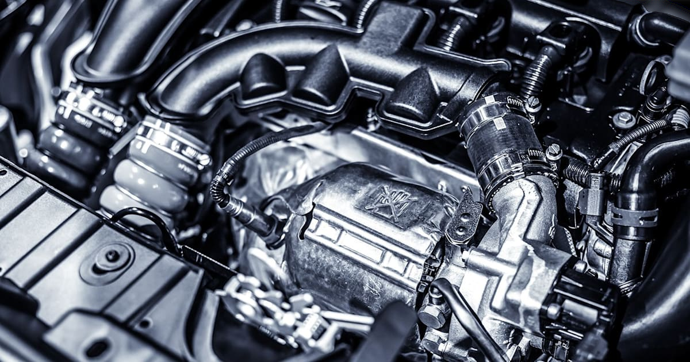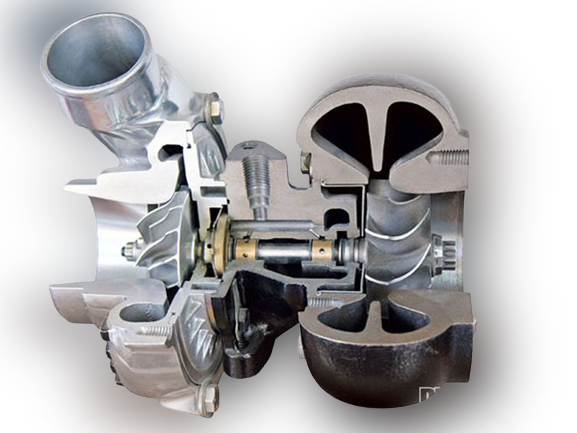Normal engine
How does a normal engine work?
The engine in your car has cylinders (3,4,5 depending on your car). Firstly, we will talk about one cylinder here. Let’s take a petrol engine for example in a petrol engine, there is an inlet valve at top of the engine from where a mixture of air and fuel is injected into the cylinder. Then, the piston inside moves up and presses the mixture, and when the piston is at its peak and the mixture is pressed the most the sparkplug on the top of the cylinder gets ignited and it causes combustion inside the cylinder, and the mixture gets burnt combustion will push the piston downward and hence power is generated and after that exhaust gases which is a combination of burnt gases and air fuel remains to get out of the engine through an exhaust valve and then piston will move downward and will suck air-fuel mixture inside the engine again.
Advantages of a normal engine:
- Non-turbo engines tend to have better throttle response than turbo engines, which means that they respond more quickly to driver inputs.
- Without a turbocharger or related components, naturally aspirated engines are less complex and can be more reliable.
- Do not require any auxiliary equipment such as boilers and condensers.
- With this process thermal efficiency is high.
Disadvantages of normal engine:
- Require more refined fuels which are costly.
- Require devices like fuel injectors and carburetors.
- Only suitable for smaller units.
- Normally aspirated engines tend to produce less power than turbo engines of the same size, as they do not have the forced induction of a turbocharger.
- Non-turbo engines tend to have less torque than turbo engines, which can result in sluggish acceleration.
Turbo engine
How does a turbo engine work?
In a turbo engine, the exhaust gases are used to get out of the engine through an exhaust pipe. The energy of those exhaust pipe gases will be utilized. In a turbo engine, a turbine unit is attached to the exhaust pipe exhaust gases fall on the turbine blades, and that turbine fan gets rotation this way. There is one more fan attached to the turbine called the compressor. That compressor has another function to do air which use to get into the engine at atmospheric pressure means that there was no external force to push the air inside.
A compressor fan will compress that air further and more quantity of the air will be pushed into a cylinder for combustion the air-fuel mixture inside the engine will get richer in quality and will cause more combustion because of the same and more combustion will cause more exhaust gases and more gases will run the turbine faster and more air will be compressed by the compressor and hence more rich mixture and more combustion and it becomes a cycle where more power will be generated without investing any fresh energy from outside to compress the air and you did not even increase the size of the engine and get more power out of the same engine.
Conclusion:
Net conclusion more power without increased CC of the engine. So this is the reason that when the turbo is mounted on the same engine. Car manufacturers increase the power of vehicles without any change in the engine cabin. This was the general understanding of the power of the turbo engine.
Now let’s talk about the power lag in the turbo engine before that you must know that the turbocharger kicks in/activate itself after a specific speed means the turbocharger does not kick in at the very start that requires the engine to rev at a specific speed. So that gases are sufficient enough to run the turbine in the exhaust pipe. So compressed air can make air-fuel mix rich and more power can be generated.
Second, when you will accelerate, the engine will run at high rpm resulting in more exhaust gases and more power and more compression will take place. So this cycle increases the power in the engine due to the turbo. It takes time in microseconds to respond to actual power at the wheel.
Advantages of turbo engine:
- Increased power for an engine of the same size or reduction in size for an engine with the same power output.
- Reduced specific fuel consumption, mechanical, thermal and scavenge efficiencies are improved due to fewer cylinders, greater air supply, and use of exhaust gases.
- Thermal loading is reduced due to a shorter more efficient burning period for the fuel leading to less exacting cylinder conditions.
- Increased torque: Turbo engines tend to have more torque (i.e., rotational force) than naturally aspirated engines. This is because the turbocharger can provide more air to the engine at low RPMs, which helps to overcome the inertia of the vehicle.
- High-altitude performance: Turbo engines can perform better at high altitudes than naturally aspirated engines. This is because the turbocharger can provide more air to the engine, compensating for the thinner air at higher altitudes.
Disadvantages of turbo engine:
- Special exhaust manifolds are required with turbochargers.
- One of the main problems with turbochargers is that they do not provide an immediate power boost. It takes a second for the turbine to get up to speed before boost is produced. This results in a lag known as turbo lag.
- Fuel injection system is required to modify to inject more fuel per cycle.
- The efficiency of the turbine blades is very sensitive to gas velocity so that it is very difficult to obtain good efficiency over a wide range of operations.
- Turbo lag is the delay between the time the driver presses the accelerator pedal and the time the turbocharger starts to provide boost. This lag can be a safety concern when passing or merging on the highway.
- Turbo engines produce more heat than regular engines. This can lead to overheating and damage to the engine components.
- Reduced Engine Life: Turbo engines may have a shorter lifespan than naturally aspirated engines due to the added stress placed on the engine components.



